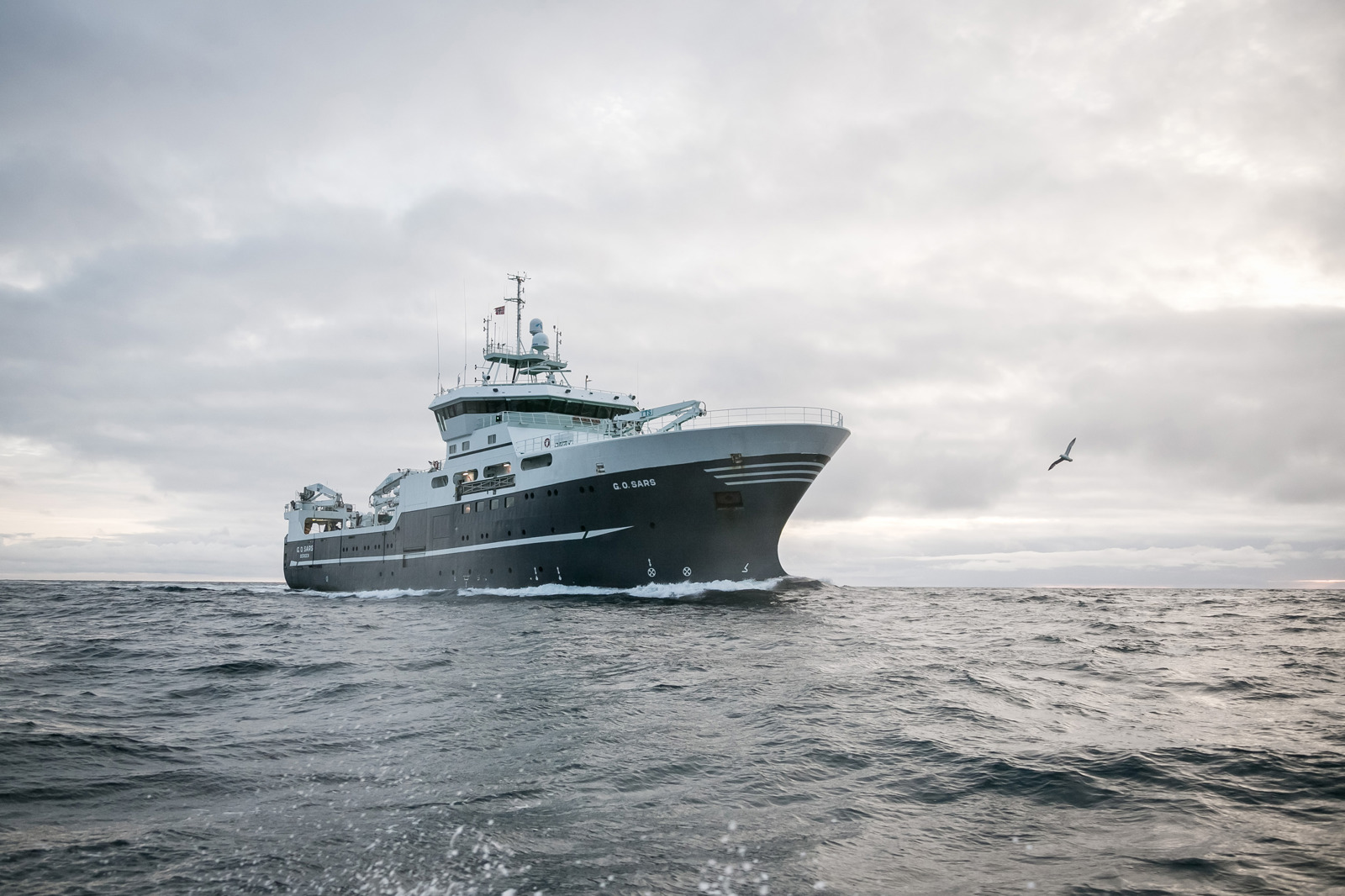
Digital future for ocean research
IMR will use two KONGSBERG Sounder unmanned surface vehicles and two autonomous underwater vehicles as part of its long-term strategy to digitise the monitoring and management of marine environments and resources.
-
Text:Marketing & Communication Department
Photo:©IMR
-
Gunvor Hatling MidtbøVice President, Communications
Scientists at the Norwegian Institute of Marine Research (IMR) are excited at the potential of harvesting much more high-quality data from the seas after Kongsberg Maritime won the bid to produce four autonomous marine ‘platforms’ from IMR.
The two autonomous underwater vehicles (AUV) and two Sounder unmanned surface vessels (USV) will provide a seamless stream of data from various sensors over KONGSBERG’s digital cloud-based infrastructure system, called Blue Insight.
-
IMR is one of the biggest marine research institutes in Europe
-
About 1,100 employees
-
Carrying out research, advisory work and monitoring the seas around Norway’s 25,000 kilometres (15,534 miles) of coastline
Like most organisations in today’s world, IMR is being challenged to “do more with less” and, as a result, has developed a new strategy where digitisation and autonomous systems will play a growing role, in tandem with its traditional research assets, to increase efficiency of its operations and both lower costs and carbon footprint.
The two AUVs will be delivered to IMR later this year with the USVs arriving in autumn 2022. Meanwhile, there is a lot of work to do to integrate them into IMR’s existing research infrastructure and to plan how they will operate in concert with its current fleet of seven research vessels. To ease training and handling, both platforms are operated using the same software, providing IMR with a single interface to integrate them into its existing survey fleet management capability.

G.O. Sars22 - Photo: ©Erlend Astad Lorentzen
WHERE NEW MEETS OLD
IMR is experienced with working with KONGSBERG AUVs as they have a joint partnership with the Defence Research Establishment and the University of Bergen to use these underwater drones for seabed mapping, and have already outfitted some of their ocean-going research vessels to accommodate this technology. The organisation is also familiar with using sail and kayak drones for biomass surveys but the arrival of the two 8-metre Sounder USVs next year will enhance IMR’s marine surveillance capabilities. These two platforms will enable IMR to survey more efficiently over wider areas and to provide high quality biomass and ocean currents data from KONGSBERG’s wide band, high-precision scientific EK80 echo sounder and ADCP system. The USV’s ‘gondola’ also has reserved space for an EM2040 high resolution multibeam echo sounder and a TOPAS sub bottom profiler, allowing for future expansion of the USV capabilities towards seafloor and sediment mapping.
IMR Research Director Geir Huse says: “Our experience with drones has shown their capabilities to enhance our data gathering research work but this new investment is really taking us in a new direction.

“The AUVs and USVs will not only improve the quality of our data collection but also the scope of our work through an ‘armada strategy’, where they work as part of a fleet alongside our research vessels, particularly in the increasingly important coastal surveys. However, in the future we envisage them working more independently to carry out marine research.”Geir Huse, IMR Research Director
Geir explains the benefits of using this new technology. They include increased surveys to enhance the quality of fish estimates; less disturbance of fish near the surface for monitoring, owing to the smaller size of the vessels; closer access to the coastline for better offshore monitoring, and lower costs and carbon footprint compared to using a traditional research vessel.
Geir adds: “However, despite their benefits, I believe traditional vessels will still have an important part to play as we still need to obtain biological specimens of the species we are monitoring. But saying that, we are really excited about the potential of using these four new platforms to make an impact on our research work.”
It’s not just Geir who is excited. The IMR scientists at CRIMAC – IMR’s Centre for Research-based Innovation in Marine Acoustic Abundance Estimation & Backscatter Classification – are also keen to receive the data from sensors on the Sounder USV platform.
CRIMAC
This will not only give us the ability to get significantly more useful data with the sensors, but platforms like this will give us the opportunity in the future to scale up efficiently to get more data for less cost.”
In addition to the enhanced data capture capability, KONGSBERG will integrate the AUVs and USVs with its digital cloud-based infrastructure system, Blue Insight, which delivers data from the sensors to IMR’s Norwegian Marine Data Centre for analysis.
The CRIMAC team will also be developing AI (Artificial Intelligence) methods of analysing the data, looking for patterns in surveys, as Nils Olav explains: “What I personally find very interesting is that we can find information in data that we did not see before. For example, one of our sand eel surveys could be analysed for some other criteria and maybe we’ll see something that others are interested in for another service. That’s when it starts to become pretty interesting because you can get more value from the data that you already collected.
“We have worked closely with KONGSBERG over the years on their sensors and data infrastructure, and have developed a good collaborative way of working. We package up our software in digital ‘containers’ and give them to KONGSBERG to run on their sensor systems to help enhance our data collection. It’s a very good way of interfacing: they don't have to worry about various software updates and all those details, and we don't have to worry about data infrastructure.”
Unlike a manned research vessel, the USV has no one on board to check the calibrations of the sensors so that is where the Blue Insight system proves its value. Low resolution data is sent continuously from the sensors via Blue Insight and the CRIMAC scientists will develop algorithms so, in the future, if they see anything they want to examine in more detail then they can send instructions to the Sounder to make adjustments in its course or sensor sensitivity.
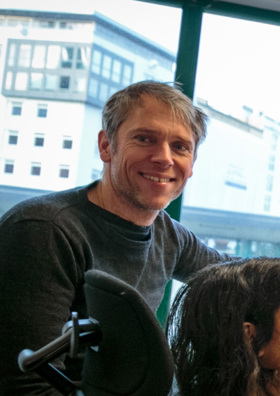
“We are also working on methods where you can carry out adaptive sampling, for example, if the Sounder USV goes into an area of high fish density and you would like to increase your sampling density, then we would have some onboard processing which would allow that to happen; in a sense, creating some autonomous decision-making onboard the platform.”Nils Olav Handegard, IMR specialist in sensor and data processing, CRIMAC
As the KONGSBERG Sounder uses the same EK80 echo sounder used in IMR’s other research vessels, Nils Olav believes the integration of the new technology will be seamless. He says: “The integration should fit into our data processing chain so it should just be ‘plug and play’.”
In order to enhance the data captured by the EK80 on the Sounder, KONGSBERG is developing a rigid ‘gondola’ box structure below the vessel so that the sensors are enclosed and suspended at a depth which is free, or at least reduced, from acoustic interference, such as micro-cavitation bubbles created by the movement of the vessel through the water or from wave action.
The hydrodynamic optimisation of the gondola, rudders and propeller of the Sounder are currently being developed by KONGSBERG’s Ocean Hydrodynamic team using state-of-the-art computational fluid dynamics and CAD modelling to ensure they both work as efficiently as possible in interaction with the Sounder’s hull design and to minimise flow interference effects with the acoustics and data quality of the sensors.
In a separate part of the development, the company’s Propulsion and Engine (P&E) division’s advanced manufacturing and material expertise is being deployed to develop 3D printing technology to manufacture the propeller and rudder. This will take advantage of additive manufacturing and composite technology gained through the Norwegian Research Council project “Propulsion for the Green future”, which is led by the P&E division in Kongsberg Maritime.

SAS image - The sounder captures what scientists believe is a whale with an itch!
While the Sounder’s gondola will also carry an Acoustic Doppler Current Profiler, there will be additional oceanographic sensors housed in the USV’s hull. These include a Conductivity-Temperature-Depth Profiler, which will be deployed through an access tube in the hull; and a pump system will continuously supply water samples to a thermosalinograph and fluorometer for analysis, making the USV a fully capable ocean-going science platform.
While the Sounder is designed for collecting data on the high seas – KONGSBERG is delivering a Sounder this year to a major Peruvian fishing company for sustainability research in the Pacific Ocean (read more) – IMR has an increasing interest in marine research of Norway’s coastal waters, owing to the increasing development of commercial operations such as aquaculture, wind energy, transport and recreational activities.
Geir says: “We’ve been involved in the Mareano Project with the Geological Survey of Norway and the Norwegian Hydrographic Service to map the depth and topography, sediment composition, contaminants, biotopes and habitats in Norwegian waters, and a new initiative has been launched called the Marine Inshore Bottom Mapping Project, where we are going to do the same thing with our partners but for the coastal zones. This has become important because of the number of activities that have developed in this zone and so we need to record and monitor the effect on marine life and provide research services to the different organisations with interests along our inshore waters.”
IMR is also involved in the Coast Watch project, where 13 areas along Norway’s coast have been identified for study regarding the country’s financially important aquaculture sector.
Geir adds: “With the new USVs, AUVs, along with drone gliders and ‘ships of opportunity’, like ferries, we can put a lot of sensors in these areas to provide coverage over a large area and monitor a whole host of different criteria. If we put this into a functional graphic model system we can provide various information services that can be used to improve the monitoring, for example, from the sea lice position to information about sea currents for fishermen.”
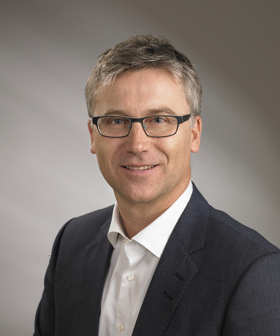
Bjørn Jalving, Senior Vice President of Technology, Kongsberg Maritime
This expanding utilisation of marine resources – termed the ‘blue economy’ – is providing new opportunities for commerce that will also need to be researched, monitored and managed, as KONGSBERG’s Senior Vice President of Technology Bjørn Jalving explains: “To create a sustainable blue economy, all the activities that happen in the marine environment need to be managed, regulated and controlled. The main purpose of ocean science is to understand the environment so that the new opportunities that present themselves can be managed in concert with nature. This allows value creation, but the value creation does not harm, in this case, the coastal environments.”
Ocean research is an area where KONGSBERG plays an important role, providing technological solutions to help with seabed mapping, biomass estimation and other oceanographic activities, and Bjorn believes that this new contract with IMR builds on KONGSBERG’s expertise in innovation. He says: “The USVs and AUVs offer a new, more cost effective way of carrying out marine research, which provides scientifically accurate data gathered at a low cost per data unit – the Sounder equipped with the EK80 echo sounder really provides the same data as a research vessel for estimating marine life.
“These are also digitally connected platforms that will work in tandem with IMR’s existing research resources and provide a seamless data flow via cloud services to the Norwegian Marine Data Centre. It’s here that CRIMAC scientists can analyse the data and generate the scientific knowledge that is going to be critical for the government to use to develop sustainable management policies for the future blue economy along Norway’s coast.”
IMR plans to integrate new platforms
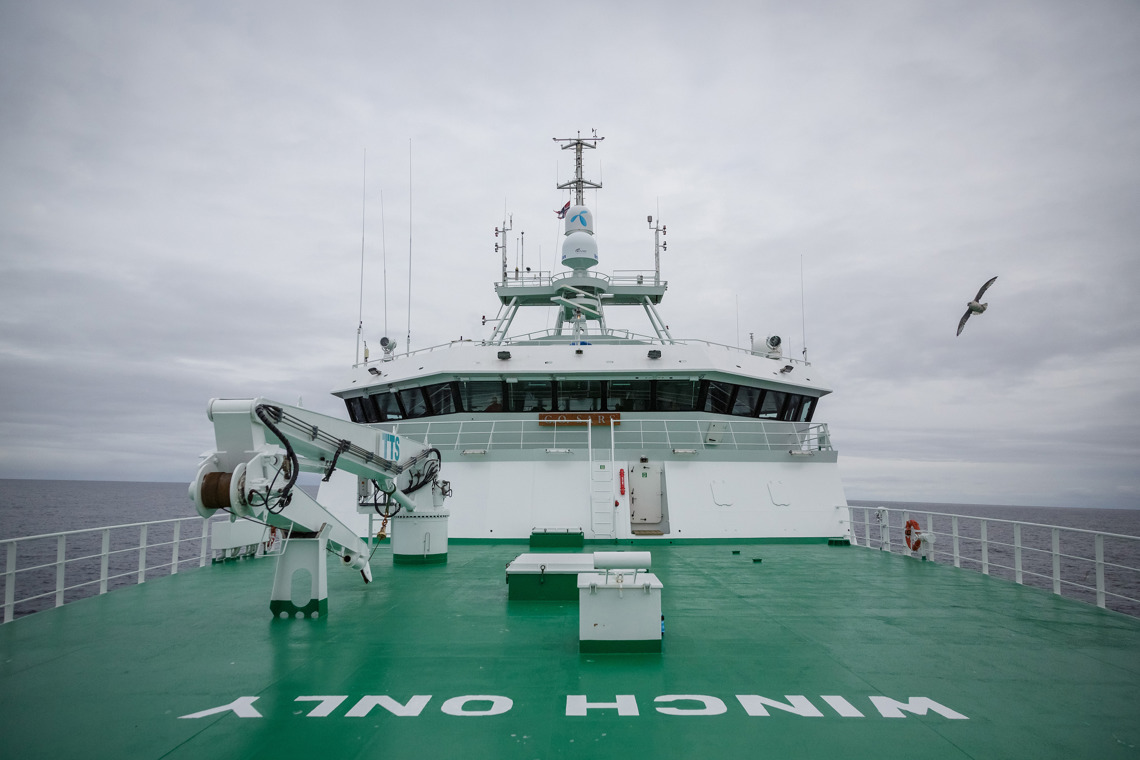
IMR has organised a new warehouse on the Bergen waterfront to house the four drones and will be creating workshop facilities to maintain them, as well as hoist facilities to take them from the water. Owing to the size and weight of the Sounders, there is an option to dock them in a local marina, and then tow them behind a research vessel for deployment.
In the case of both platforms, the training of IMR personnel to operate the two different technologies will be crucial, as will the development of transferable sensor support packages so that both platforms can operate seamlessly from different vessels.
As a former navigator and ship designer, Per foresees an issue with manoeuvring the Sounder around other vessels, particularly in near shore environments where there is much more activity. He says: “In Norway we have very little legislation or procedures on using unmanned vessels so I believe we are going to have to operate the Sounders by remote control in these areas as they are large enough to do some damage if they had a collision with another vessel. That would require another person, most likely a certified navigator, on board the ‘mother ship’ to control the Sounder, so there are many issues to sort out, particularly mission planning and mission execution, before we deploy them.
“However, at the same time I think it is a fantastic opportunity for IMR and Norway to use drones to develop our scientific research, but having been former head of IMR’s Vessel Department for 21 years I don’t believe they will ever replace the capability of a manned research ship.”
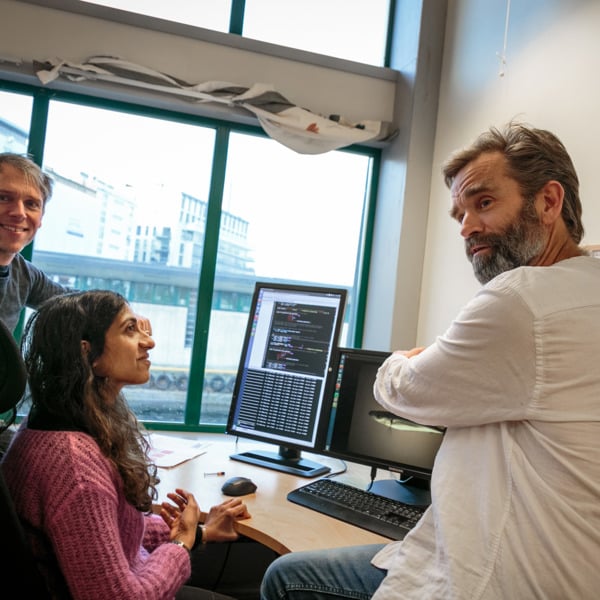
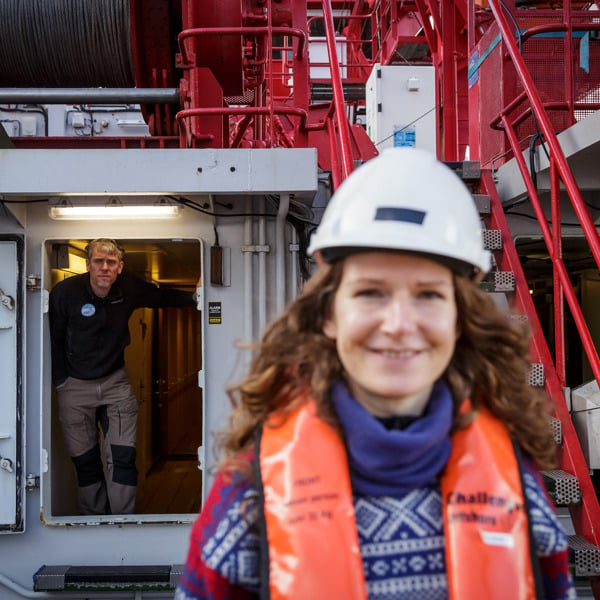
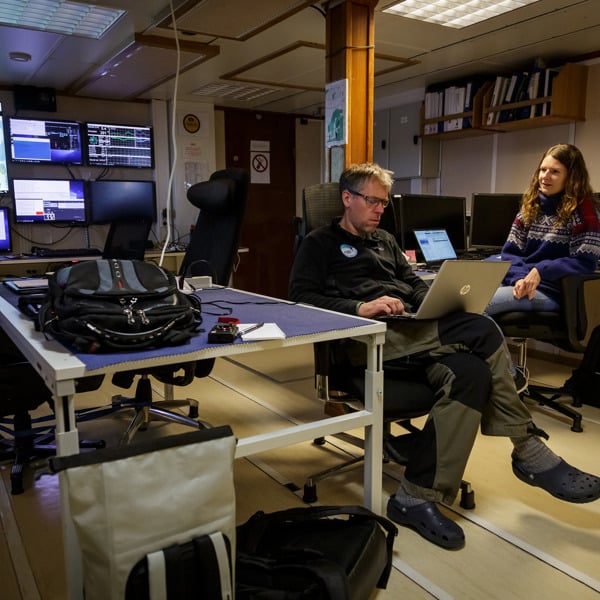
After the second world war, Willy Simonsen, a former radio engineer, formed a company called Simrad to produce ruggedised radios and echo sounders for Norway’s fishing fleet. The success of this company – which was later acquired by Kongsberg Maritime – was due to the strategic collaboration Simrad entered into with the Institute of Marine Research and the Norwegian Defence Research Establishment to develop technology for the fishing industry and fish stock management. Today, Simrad is a leading brand used for acoustic instrumentation for the fishing fleets and aquatic science organisations around the world.
This long-standing collaboration continues, not only with developing Simrad products but with the new contract from IMR to acquire KONGSBERG’s autonomous underwater vehicles and Sounder unmanned surface vessels together with the Blue Insight cloud-based data system.
Tonny Algrøy, Sales Director, Ocean Science, KONGSBERG Maritime, explains: “This delivery builds upon decades of collaborative work with the IMR to create innovative solutions for ocean ecosystem monitoring, and the addition of smart platforms plus a new e-infrastructure solution is a logical next step in this shared history.”
*CRIMAC was created as a platform where industry and research can collaborate to develop state-of-the-art methods for better management of oceans through improved ecosystem monitoring. The partnership also includes the University of Bergen, the Norwegian computing centre, the Norwegian Research Centre, the Scantrol Group, CodeLab, Norway Royal Salmon and the fishing companies Eros AS and Liegruppen AS.”

AUV AND CRAB MONITORING
Although IMR has ordered two KONGSBERG AUVs primarily for their traditional seabed mapping abilities, many at the institute can see great potential to use its onboard camera and high resolution Synthetic Aperture Sonar to monitor crab populations in the northern seas.
King crabs, found along the coast, and snow crabs in the open Arctic part of the Bering Sea have become an invasive species in recent decades and IMR’s traditional method of population estimates using trawlers is relatively expensive, time consuming and invasive.
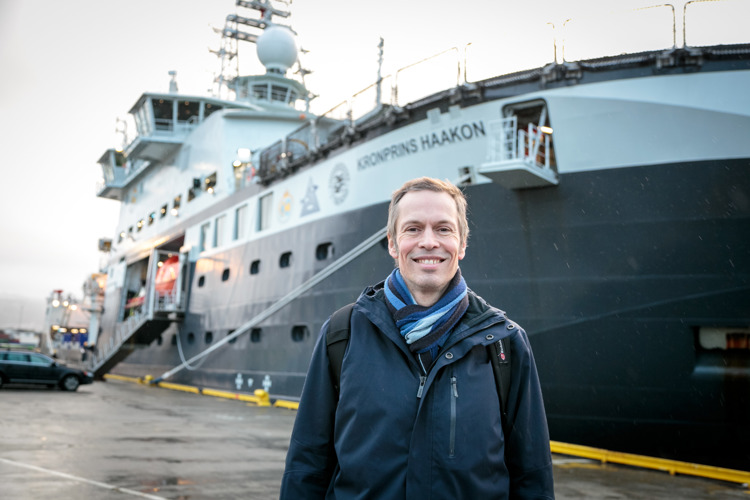
IMR Research Director Geir Huse says: “Instead of trawling, which is very variable in the number of crabs you catch, we can use the AUV’s sonar imagery to simply map where they are on the seabed which will be much quicker and much more precise.
“At the moment, though, this is just an idea and we do not know whether this will work, or how well it will work. But clearly it’s our ambition to test how we can use this new technology in many ways that will help us in our research and monitoring.”